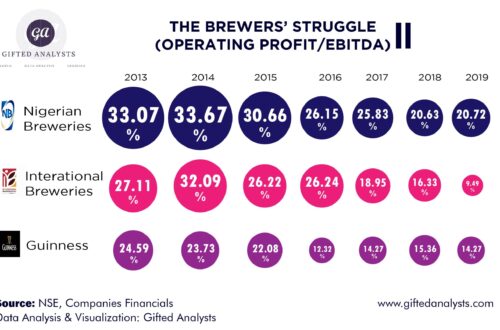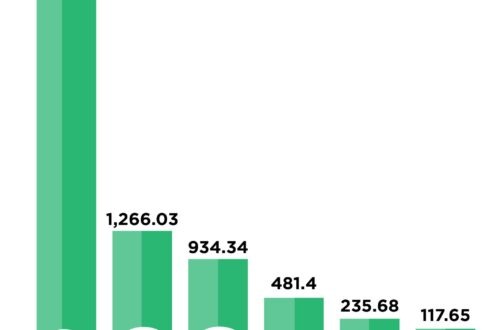
Full Project on Rural Tourism Development and Economic Diversification in Nigeria
Image Credit: Gifted Hands Associate
CHAPTER ONE
INTRODUCTION
1.1 BACKGROUND OF THE STUDY
Tourism is one of the largest and fastest growing industries in the world. In both developed and developing countries, tourism is frequently supposed to be a viable means of raising the economic activity of regions. Additionally, the development of a tourism industry has been noted to promote the destination’s image, enabling the region to achieve other objectives, such as business recruitment and retention.
According to the World Travel and Tourism Council, tourism generates 12% of the global gross national product and it employs around 200 million people worldwide. Tourist arrivals are estimated to reach 1 billion by 2010 and 1.6 billion by 2020 worldwide.
Declining economic activity, restructuring of the agricultural sector, dwindling rural industrialisation and out-migration of higher educated youth, has led to
the adoption, in many western nations, of tourism as an alternative development strategy for the economic and social regeneration of rural areas (Pompl & Lavery,1993; Williams & Shaw, 1991; Hannigan, 1994a; Dernoi,1991; Wickens, 1999).
Top tourism destinations, particularly in developing countries, include national parks, wilderness areas, mountains, lakes, and cultural sites, most of which are generally rural. Thus tourism is already an important feature of the rural economy in these specific sites. It is self-evident that tourism will never come to dominate all rural areas, particularly in the developing world are vast swathes of rural areas for which tourism is not relevant for the foreseeable future. Between these two extremes are poor rural areas with some tourism potential, and an urgent need to develop whatever economic potential they have.
As many as 75% of the world’s poor live in the rural areas and more than one-third of rural areas are in arid and semiarid regions (Chaudhry and Gupta, 2010). It is in the context that rural tourism is identified as a tool for rural revitalization and economic diversification. An important question is whether more can be done to develop tourism within such rural areas, as a way of dispersing the benefits of tourism and increasing its poverty impact (Holland, et al., 2003). The aim of promoting tourism is to increase the net benefits to rural people, and increase their participation in managing the tourism product. It can also be to serve as a source of foreign exchange to the country thereby increasing its revenue base. If more tourism can be developed in rural areas, particularly in ways that involve high local participation in decisions and enterprises, then poverty impacts are likely to be enhanced. The nature of rural tourism products, often involving small-scale operations and culturally-based or farm-based products can be conducive to wide participation.
In less developed countries of sub-Saharan Africa, afflicted by debilitating rural poverty, tourism is perceived to be one of the few feasible options for development. Compelled by the pressures of restructuring, and driven by demands for economic growth and job creation, governments in developing countries however frequently fall prey to the dangers of random, ad hoc development, without due regard to the economic and cultural well-being of rural communities, the conservation of the environment or the inclusion of
local residents in decision-making (Britton, 1991; Drake, 1991; Evans & Ibery, 1989; Getz, 1983; Long, Perdue, & Allen, 1990; Marsden, 1992; Prentice, 1993).
Nigeria’s tourism landscape is extremely rich and beautiful for global tourist attraction; the weather, climate, vegetation, quality airspace, sunshine, beautiful scenery, the rock, falls, captivating beaches, historical relics, rich cultural diversity, friendly peoples and wildlife are Nigeria’s tourism assets. This makes Nigeria a leading tourism paradise in Africa. The World Trade Organization (WTO, 2014) noted that tourism and hospitality industry is one of Africa’s greatest but most under invested assets, with market worth $50billion, but has $203.7 billion of untapped potential which represents four times its current level. The Organization’s forecast for international tourist arrivals to Africa indicates that “there will be 77.3 million visitors in 2020. This represents an annual growth rate of 5.5% over the decade, which is above the global growth rate of 4.1%. Elsewhere it is estimated that Africa, together with Asia will contribute more than half of the projected growth in international visitation with 30% of that growth expected around the world, (Bichaka et al. 2007).
In Nigeria, the downstream economic impacts from the exports revenues of international tourists’ spending are estimated to generate additional annual gross revenue of $224m (N29b). Furthermore, the market share of emerging economies is not left out in this boom, increasing from 30% in 1980 to 47% in 2015, and is expected to reach 57% by 2030, equivalent to over 1billion international tourist arrivals (UN,WTO’s Long Term Forecast Tourism Towards 2030).
The above portends an alternative to oil dependent economy which may serve as one of the viable ways against global economic uncertainty with the volatility of oil price. The economy is characterised with monolithism, high level of abject poverty, unemployment and low productivity. According to Suberu et al (2015) Nigeria needs to break loose from the problems inherent in a mono-economy, especially one largely dominated by oil, which is subject to depletion, international price shocks and unfavourable quota arrangement, thus the need for diversification. Ajadi (2012) believed today Nigeria is experiencing rapid economic and population growth, which resulted in a series of mixed effects on its economy, social, and natural environment. Despite the numerous efforts engaged in, towards the improvement of the Nigerians living conditions, it is recognized that the country has several pressing issues to resolve, particularly in areas such as income inequality, unemployment, insecurity and crime and other societal challenges, hence Ajadi (2012) opined that tourism can play a vital role in the socio-economic development and promotion for Nigeria as one of the fastest growing economy in the world today. As a result, rural tourism can be employed as a viable tool for achieving optimum employment generation, steady rural – urban integration, revenue for the government and cultural exchange for internal and external understanding.
With relation to these arguments, it can be hypothesized that rural tourism could be promoted as a means of diversifying the Nigerian economy.
Download Full Project on Rural Tourism Development and Economic Diversification in Nigeria

You May Also Like

[INFOGRAPHICS] 7-Year Comparison of Operating Profits of Brewers in Nigeria
July 23, 2020
Using ARDL Bounds Test for Time Series Data Analysis [PDF]
January 20, 2020